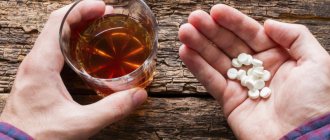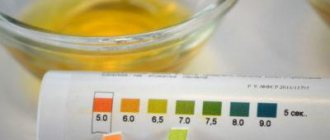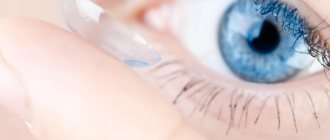Main stages of growing crystals
The process of growing crystals at home can be divided into main stages.
Stage 1. Dissolve the salt from which the crystal will grow in heated water (it needs to be heated so that the salt dissolves a little more than it can dissolve at room temperature). You need to dissolve the salt until you are sure that the salt will no longer dissolve (the solution is saturated!). It is recommended to use distilled water, i.e., not containing impurities of other salts.
Stage 2. The saturated solution needs to be poured into another container where crystals can be grown (taking into account that it will increase). At this stage, you need to make sure that the solution does not cool too much.
Stage 3. Tie a crystal of salt to a thread; the thread can be tied, for example, to a pencil and put it on the edge of a glass (container) where a saturated solution is poured (stage 2). Place the crystal into a saturated solution.
Stage 4. Transfer the container with the saturated solution and the crystal to a place where there are no drafts, vibration and strong light (growing crystals requires compliance with these conditions).
Stage 5. Cover the container with the crystal with something on top (for example, paper) to prevent dust and debris from entering. Leave the solution for a couple of days.
Important to remember:
1) the crystal cannot be removed from the solution during growth without a special reason;
2) do not allow debris to get into the saturated solution; it is most preferable to use distilled water;
3) monitor the level of the saturated solution, periodically (once a week or two) update the solution as it evaporates.
Structure of crystals.
Depending on their structure, crystals are divided into ionic, covalent, molecular and metallic. Ionic crystals are built from alternating cations and anions, which are held in a certain order by forces of electrostatic attraction and repulsion. Electrostatic forces are non-directional: each ion can hold around itself as many ions of the opposite sign as it fits. But at the same time, the forces of attraction and repulsion must be balanced and the overall electrical neutrality of the crystal must be maintained. All this, taking into account the size of the ions, leads to different crystal structures. Thus, during the interaction of Na+ ions (their radius is 0.1 nm) and Cl– (their radius is 0.18 nm), octahedral coordination occurs: each ion holds six ions of the opposite sign near itself, located at the vertices of the octahedron. In this case, all cations and anions form the simplest cubic crystal lattice, in which the vertices of the cube are alternately occupied by Na+ and Cl– ions. Crystals of KCl, BaO, CaO, and a number of other substances are structured similarly.
Cs+ ions (radius 0.165 nm) are close in size to Cl– ions, and cubic coordination occurs: each ion is surrounded by eight ions of the opposite sign located at the vertices of the cube. In this case, a body-centered crystal lattice is formed: in the center of each cube formed by eight cations, one anion is located, and vice versa. (It is interesting that at 445°C CsCl transforms into a simple cubic lattice like NaCl.) The crystal lattices of CaF2 (fluorite) and many other ionic compounds are more complex. In some ionic crystals, complex polyatomic anions can be connected in chains, layers, or form a three-dimensional framework, in the cavities of which cations are located. This is how silicates are structured, for example. Ionic crystals form most salts of inorganic and organic acids, oxides, hydroxides, and salts. In ionic crystals, the bonds between ions are strong, therefore such crystals have high melting points (801°C for NaCl, 2627°C for CaO).
In covalent crystals (they are also called atomic crystals), at the nodes of the crystal lattice there are atoms, identical or different, that are connected by covalent bonds. These connections are strong and directed at certain angles. A typical example is diamond; in its crystal, each carbon atom is connected to four other atoms located at the vertices of the tetrahedron. Covalent crystals form boron, silicon, germanium, arsenic, ZnS, SiO2, ReO3, TiO2, CuNCS. Since there is no sharp boundary between polar covalent and ionic bonds, the same is true for ionic and covalent crystals. Thus, the charge on the aluminum atom in Al2O3 is not +3, but only +0.4, which indicates a large contribution from the covalent structure. At the same time, in cobalt aluminate CoAl2O4, the charge on aluminum atoms increases to +2.8, which means the predominance of ionic forces. Covalent crystals are generally hard and refractory.
Molecular crystals are built from isolated molecules between which relatively weak forces of attraction act. As a result, such crystals have much lower melting and boiling points, and their hardness is low. Thus, crystals of noble gases (they are built from isolated atoms) melt at very low temperatures. From inorganic compounds, molecular crystals form many nonmetals (noble gases, hydrogen, nitrogen, white phosphorus, oxygen, sulfur, halogens), compounds whose molecules are formed only by covalent bonds (H2O, HCl, NH3, CO2, etc.). This type of crystal is also characteristic of almost all organic compounds. The strength of molecular crystals depends on the size and complexity of the molecules. Thus, helium crystals (atomic radius 0.12 nm) melt at –271.4°C (under a pressure of 30 atm), and xenon crystals (radius 0.22 nm) - at –111.8°C; Fluorine crystals melt at –219.6°C, and iodine crystals at +113.6°C; methane CH4 – at –182.5°C, and triacontane C30H62 – at +65.8°C.
Metal crystals form pure metals and their alloys. Such crystals can be seen on broken metals, as well as on the surface of galvanized sheet. The crystal lattice of metals is formed by cations that are bound by mobile electrons (“electron gas”). This structure determines the electrical conductivity, malleability, and high reflectivity (brilliance) of crystals. The structure of metal crystals is formed as a result of different packing of sphere atoms. Alkali metals, chromium, molybdenum, tungsten, etc. form a body-centered cubic lattice; copper, silver, gold, aluminum, nickel, etc. - a face-centered cubic lattice (in addition to the 8 atoms at the vertices of the cube, there are 6 more located in the center of the faces); beryllium, magnesium, calcium, zinc, etc. - the so-called hexagonal dense lattice (in it 12 atoms are located at the vertices of a rectangular hexagonal prism, 2 atoms at the center of the two bases of the prism and 3 more atoms at the vertices of a triangle in the center of the prism).
All crystalline compounds can be divided into mono- and polycrystalline. A single crystal is a monolith with a single undisturbed crystal lattice. Natural single crystals of large sizes are very rare. Most crystalline solids are polycrystalline, that is, they consist of many small crystals, sometimes visible only under high magnification.
Growing crystals from alum
To grow a crystal from alum you will need: a saucepan, a measuring cup, 2 glasses, a pencil, thread, water, 30 g of alum from the pharmacy. Alum can be used to grow a very beautiful crystal. You need to heat 100 ml of water in a saucepan. Just don't bring it to a boil. Then you should dissolve alum in it. Then you need to pour the solution into a glass and let it cool a little. Then you should tie the thread to the middle of the pencil. Next, you should place the pencil on the edge of the glass so that the thread is in the solution. Once tiny crystals form on the thread, you need to remove it from the solution. Now you should remove all the crystals from the thread, leaving only the largest. Next, you need to slightly heat the solution poured into the glass again and mix it. Now you need to pour it without sediment into the second glass. Next, you need to hang the thread with the crystal again. Now we need to wait and watch. In a few days you will get a crystal of alum.
Suspicious symptoms requiring urine testing
The appearance of this substance in the urine of men and women is often caused by elevated total cholesterol levels. If the following symptoms occur, you should consult a doctor and undergo a urine test with microscopy:
- the appearance of xanthelasma on the epidermis;
- deterioration of skin condition;
- sudden hair loss;
- muscle fatigue;
- blood pressure surges (hypertension);
- severe headaches;
- apathy;
- erection problems in men;
- painful sensations when urinating.
Return to contents
Growing crystals from table salt
You can also grow table salt crystals. The growing process does not require any special chemicals. You need to dilute the solution of table salt as follows: pour water into a container (for example, a glass) and place it in a pan with warm water (no more than 50°C - 60°C). You need to pour table salt into a glass and leave for 5 minutes, stirring first. During this time, the glass of water will heat up and the salt will dissolve. It is advisable that the water temperature does not drop yet. Then you need to add more salt and mix again. This step should be repeated until the salt no longer dissolves and settles to the bottom of the glass. We will get a saturated salt solution. You need to pour it into a clean container, getting rid of excess salt at the bottom. You need to choose any larger crystal of table salt you like and put it on the bottom of a glass with a saturated solution. You can tie the crystal by a thread and hang it so that it does not touch the walls of the glass. Now we need to wait. After just a couple of days, you can notice significant growth for the crystal. Every day it will increase. And if you do the same thing again (prepare a saturated salt solution and drop this crystal into it), then it will grow much faster (you need to remove the crystal and use the already prepared solution, adding water and the required portion of table salt to it). We should not forget that the solution must be saturated, that is, when preparing the solution, salt should always remain at the bottom of the glass (just in case). For information: approximately 35 g of table salt can dissolve in 100 g of water at a temperature of 20°C. With increasing temperature, the solubility of salt increases. This is how table salt crystals are grown (or salt crystals, the shape and color of which you prefer).
Treatment
Treatment for crystalluria includes:
Drug therapy involves taking the following medications:
- With an increased urate content, the following are prescribed: “Blemaren”, “Asparkam”.
- If oxalates are elevated: “Xidifon”, “Pyridoxine”.
- For phosphates, the use of: “Canephron”, “Cyston” is indicated.
In addition, vitamin and mineral complexes and sorbents are prescribed.
Increasingly, probiotics are used to treat salts in urine: bifidobacteria, lactobacilli and their complexes.
It is very important to follow a diet that depends on the type of salts.
If the urate content is high, you should avoid fried, smoked, salty foods, fatty fish and meat soups, alcoholic beverages, chocolate, strong coffee and tea, and baked goods.
The diet must include: dairy products, sweet berries and fruits, vegetables and vegetarian soups.
If oxalates are detected in the urine, it is prohibited to consume foods containing oxalic acid (sorrel, rhubarb, sour apples), fatty, salty, smoked dishes, rich soups.
The menu should include the following products: sweet fruits and berries, foods high in B vitamins (buckwheat, millet) and magnesium (dried fruits), non-acidic vegetables.
A diet for phosphaturia involves avoiding sweet and baked goods, alcoholic beverages, dairy products, chocolate, and fatty meats.
It is allowed to eat cereals, berries, fruits, and protein dishes.
When diagnosing crystalluria, it is necessary to follow a drinking regime, drink at least 3 liters of liquid . The amount of table salt consumed should be reduced to 3 grams per day.
Traditional medicine is widely used to remove salts from the body.
To remove urate salts, the herb half-fallen . To prepare the decoction, you need to brew a tablespoon of raw material with a glass of hot water, bring to a boil, and leave for an hour. Take half a glass twice a day. The course of treatment is 14 days. The herb helps restore the water-salt balance; it is able to dissolve and remove small stones and sand from the kidneys.
A collection of parsley roots, dried leaves of strawberries, lingonberries, knotweed and tansy flowers removes oxalic and uric acid salts well. To prepare the decoction, you need to pour 2 tablespoons of the mixture with 2 cups of boiling water, leave for 2-3 hours, pass through a sieve. Drink the resulting liquid throughout the day.
An infusion of oat grains removes salts and sand from the kidneys, and prevents the formation of urate and oxalate stones. To prepare the decoction, you need to brew a glass of unrefined grain with a liter of boiling water and leave for 10-12 hours. Take half a glass before each meal.
Doctors recommend drinking freshly squeezed carrot and rowan juice, lingonberry and cranberry fruit drinks. They are diuretics and remove excess fluid from the body.
Electrical and optical properties of crystals
Crystals played an important role in many technological innovations of the twentieth century. Some crystals generate an electrical charge when deformed. Their first significant application was the manufacture of radio frequency oscillators stabilized by quartz crystals. By forcing a quartz plate to vibrate in the electric field of a radio frequency oscillatory circuit, it is possible to stabilize the receiving or transmitting frequency.
Semiconductor devices, which revolutionized electronics, are made from crystalline substances, mainly silicon and germanium. In this case, alloying impurities that are introduced into the crystal lattice play an important role. Semiconductor diodes are used in computers and communications systems, transistors have replaced vacuum tubes in radio engineering, and solar panels placed on the outer surface of spacecraft convert solar energy into electrical energy. Semiconductors are also widely used in AC-DC converters.
Crystals are also used in some lasers to amplify microwave waves and in lasers to amplify light waves. Crystals with piezoelectric properties are used in radio receivers and transmitters, in pickup heads and in sonar. Some crystals modulate light beams, while others generate light under the influence of an applied voltage.
The regular arrangement of molecules in liquid crystals determines their special optical properties. Their properties can be controlled by exposing them to a magnetic or electric field. It is used in LCD displays on watches, calculators, computers and late-model televisions.
What is the secret of the uniqueness of crystals?
The uniqueness of crystals lies in their special shape and the faces they form. If you look closely at the crystals of salt and sugar, you can see the difference even without a microscope.
All crystal lattices are different geometric shapes: triangles, rectangles, squares, rhombuses, etc., and the shape depends on the type of molecules and atoms of each substance.
REMEMBER! The process of crystal formation is called crystallization. In nature, crystals quite often form when a liquid cools and then solidifies: certain molecules of the liquid gather together in the form of a special lattice, which is repeated several times.
Diamond
The hardest and rarest of natural minerals is diamond. Today, a diamond is primarily a working stone, not a decoration stone. Due to its exceptional hardness, diamond plays a huge role in technology. Diamond saws are used to cut stones. A diamond saw is a large (up to 2 meters in diameter) rotating steel disk, on the edges of which cuts or notches are made. Fine diamond powder mixed with some adhesive substance is rubbed into these cuts. Such a disk, rotating at high speed, quickly saws any stone. Diamond is of enormous importance when drilling rocks and in mining operations. Diamond points are inserted into engraving tools, dividing machines, hardness testing apparatus, and drills for stone and metal. Diamond powder is used to grind and polish hard stones, hardened steel, hard and super-hard alloys. The diamond itself can only be cut, polished and engraved with diamond. The most critical engine parts in automotive and aircraft production are processed with diamond cutters and drills.
Ruby, sapphire, garnet and emery
Ruby and sapphire are among the most beautiful and most expensive of precious stones. All these stones have other qualities, more modest, but useful. Blood-red ruby and azure-blue sapphire are siblings, they are generally the same mineral - corundum, aluminum oxide A12O3. The difference in color arose due to very small impurities in aluminum oxide: a tiny addition of chromium turns colorless corundum into a blood-red ruby, titanium oxide into sapphire. There are corundums of other colors. They also have a very modest, nondescript brother: brown, opaque, fine corundum - emery used to clean metal, from which sandpaper is made. Corundum, with all its varieties, is one of the hardest stones on Earth, the hardest after diamond. Corundum can be used to drill, grind, polish, sharpen stone and metal. Grinding wheels, whetstones, and grinding powders are made from corundum and emery. The entire watch industry runs on artificial rubies. In semiconductor factories, the finest circuits are drawn with ruby needles. In the textile and chemical industries, ruby thread guides draw threads from artificial fibers, nylon, and nylon.
A powerful laser beam with enormous power. It easily burns through sheet metal, welds metal wires, burns through metal pipes, and drills the thinnest holes in hard alloys and diamond. These functions are performed by a solid laser using ruby, garnet and neodite. In eye surgery, neodyne lasers and ruby lasers are most often used. Ground-based short-range systems often use gallium arsenide injection lasers. New laser crystals have also appeared: fluorite, garnets, gallium arsenide, etc.
Sapphire is transparent, so plates for optical instruments are made from it. The bulk of sapphire crystals goes to the semiconductor industry.
Quartz
Flint, amethyst, jasper, opal, chalcedony are all varieties of quartz. Small grains of quartz form sand. And the most beautiful, most wonderful variety of quartz is rock crystal, i.e. transparent quartz crystals. Therefore, lenses, prisms and other parts of optical instruments are made from transparent quartz. The electrical properties of quartz are especially amazing. If you compress or stretch a quartz crystal, electrical charges appear on its edges. This is the piezoelectric effect in crystals. Nowadays, not only quartz is used as piezoelectrics, but also many other, mainly artificially synthesized substances: blue salt, barium titanate, potassium and ammonium dihydrogen phosphates (KDP and ADP) and many others. There are also piezoelectric methods for measuring blood pressure in human blood vessels and the pressure of juices in the stems and trunks of plants. Piezoelectric plates measure, for example, the pressure in the barrel of an artillery gun when fired, the pressure at the moment of a bomb explosion, the instantaneous pressure in engine cylinders when hot gases explode in them.
The electro-optical industry is an industry of crystals that do not have a center of symmetry. This industry is very large and diverse; its factories grow and process hundreds of types of crystals for use in optics, acoustics, radio electronics, and laser technology.
Description
Excess salts in the urine of a healthy person occurs due to the predominance of an alkaline reaction. This occurs when eating large quantities of dairy products, canned food, fish, vegetables, fruits and ignoring animal proteins (meat). Carbonated drinks, so beloved by children, significantly increase the amount of phosphates.
It is not for nothing that traditional dietetics has been struggling for decades to ensure that all types of nutrients are sufficiently present in the diet. A healthy balanced diet contributes to the normal functioning of all human organs and systems. Vegetarianism and dieting can have a negative impact on your health!
Phosphates in the urine are often found in women during pregnancy. Most often, this does not mean pathology: the taste preferences of pregnant women and toxicosis of the first half lead to significant changes in nutrition, when a woman cannot tolerate some foods and, conversely, consumes others in excessive quantities; this is immediately reflected in urine tests.
There is another reason for phosphaturia in pregnant women: the kidneys, forced to remove metabolic products “for two,” cannot cope with the load, especially if the woman was susceptible to inflammatory diseases of the urinary tract before pregnancy. In this case, pregnancy should proceed under the strict supervision of a urologist.
Phosphaturia can be detected in a child. Metabolic processes in childhood undergo their development, ending at the end of adolescence, so in this case it is too early to talk about pathology. In a small child (under 5 years old), phosphates in the urine may indicate rickets; If symptoms are present, the doctor prescribes vitamin therapy for the baby.











